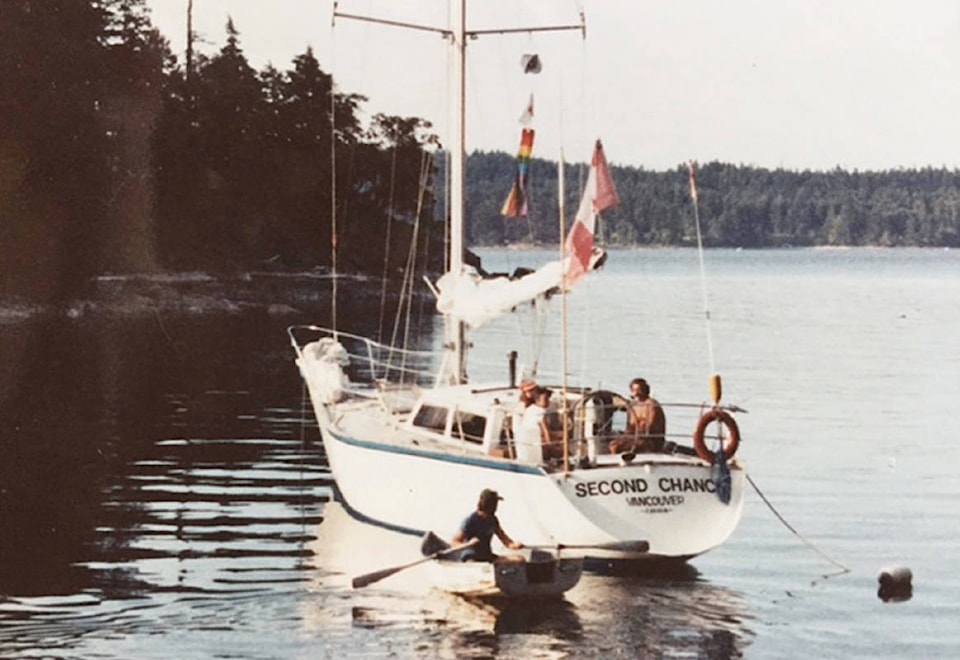My husband and I were married in 1981, which was a momentous year for Canada. I would like to say it was because of our marriage, but, sadly, it was due to record high interest rates.
Double digits were common from 1973 to 1991. They peaked in 1981 at 20 per cent for a five-year fixed rate mortgage, amortized over 30 years.
And even though house prices averaged around $73,000, which today’s young house hunters would give their eye teeth for, the interest rates were 1981’s barrier to young people trying to get into the housing market.
Consequently, as newly weds, we never went into the housing market, instead opting to look at alternative lifestyles, which pointed us in the direction of buying and living onboard a sailboat, Second Chance, which we did for 14 years.
Now you probably want to stereotype us as hippie types, as that is who I envisioned our neighbours to be, and, to some degree, at least in the “sneak-a-board” living arrangements of our early marina years, my assumptions were correct.
Most notably was when we had to move our boat to Gibsons for my husband’s job. We moored it at the marina in front of the famous Molly’s Reach Restaurant in Gibson’s Landing, which was a fixture of the old TV show The Beachcombers, and our neighbour was a man who called himself Gordy ‘the Troll.’
Gordy insulated his boat with his old cigarette packages and belonged to the federal Rhinoceros Party, which was a satire party that promised to not keep any of its promises.
Gordy was pretty reflective of the eclectic group that made up that particular boating neighbourhood, but everyone was harmless and we actually enjoyed our time there, as we met some people who remain our friends today.
But, no, Gordy is not one of them.
However, when we were able to move the boat back to the Lower Mainland and moor it in a live-a-board marina in False Creek, we found ourselves surrounded by people who you find in typical neighbourhoods. We had the pleasure of being neighbours with teachers, lawyers, nurses, a newspaper editor, set designer, firemen and other professionals and established trades people.
The odd ‘Gordy’ was still in the mix.
No matter how nice a boat is, the amenities are slim. For the first nine years on our boat, I didn’t have a proper refrigeration system, instead relying on an icebox that was recessed into a three-by two-foot galley (kitchen) counter.
If you have ever camped and had to rely on a cooler, you know that the item you need is always at the bottom and it is a pain having to constantly arrange the food so the highly perishable items are positioned directly on the ice. So when a friend, who was a refrigeration technician, offered to install a chiller plate, which meant I would no longer have to haul and use ice, you would have thought he offered me a complete home renovation, as that is what it felt like to me.
We lived in about 300-square-feet, if you factored in the length and configuration of the boat, which was a 42-foot aluminum sloop (one mast). So you can understand why possessions must be minimal.
I admit that I am a “clothes horse,” so my one drawer and 40 inches of closet space was something that I had to work around and I was grateful for closet space at my parents’ house, as the smell of diesel gets into everything and it was nice having a place to store “off-season” clothing.
Once the kids came along, space was then given over to their clothes and the limited toys that they were able to have. Lego was popular with our kids, but most leisure time was spent out and about, as it was just easier to be outdoors.
To this day, all three of my kids love the outdoors and all take to the water without hesitation. Raising kids on a boat has an element of risk, as the potential of falling overboard is real.
However, they were never out of our sight, or without a life jacket when on the deck or the dock, and we never let our guard down, which should be the case whenever kids are around water.
The kids’ social life had to be approached differently, as people are hesitant to let their kids go to a boat, but we always managed to organize play dates and outings that met their needs.
Living on a boat is an adjustment and it makes you tune into your “needs” as opposed to your “wants,” as there isn’t a lot room for the latter.
Having lived this way for 14 years, I would have to say the biggest take away, outside of experiencing B.C.’s amazing cruising waters, was seeing that our family could live in a minimalistic environment and be extremely happy.
And although it isn’t for everyone, it is an option if someone is up for the adventure, especially during this outrageous housing market.
However, speaking from experience, boating, especially sailing, is 90 per cent boredom and 10 per cent sheer terror, so it would be wise to investigate the sport before committing to the living arrangements, as you will last a lot longer in the live-a-board lifestyle and get maximum pleasure from the boating opportunities that B.C. affords, if you become a skilled boater first.
Cheryl Ashlie is a former Maple Ridge school trustee, city
councillor, constituency
assistant and current
citizen of the year.
